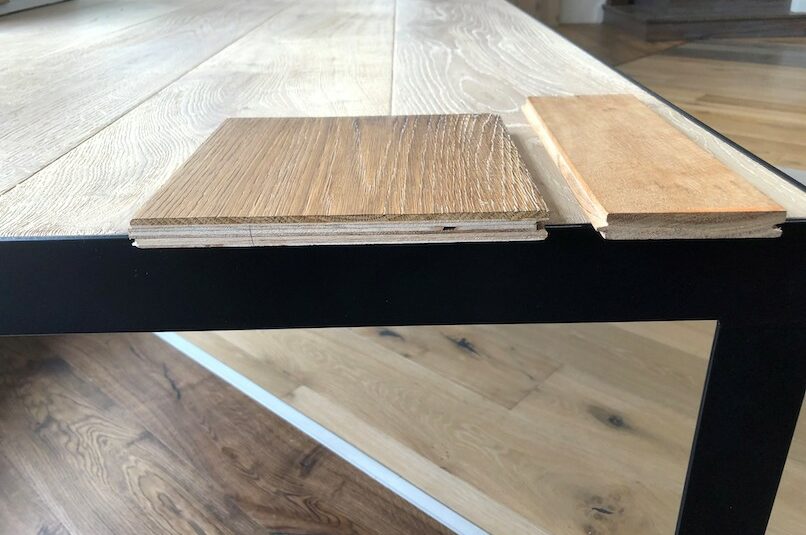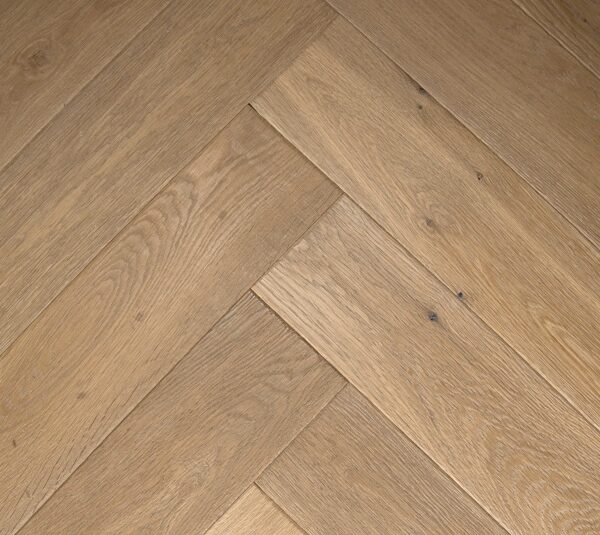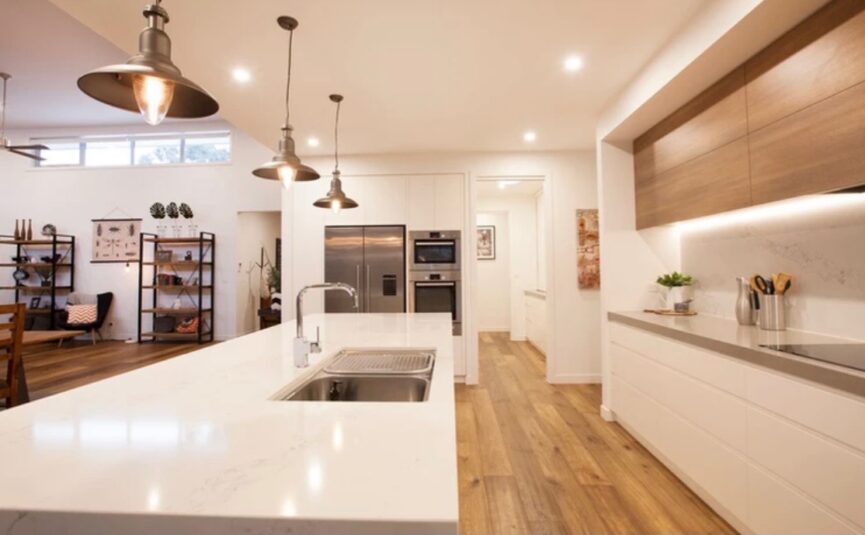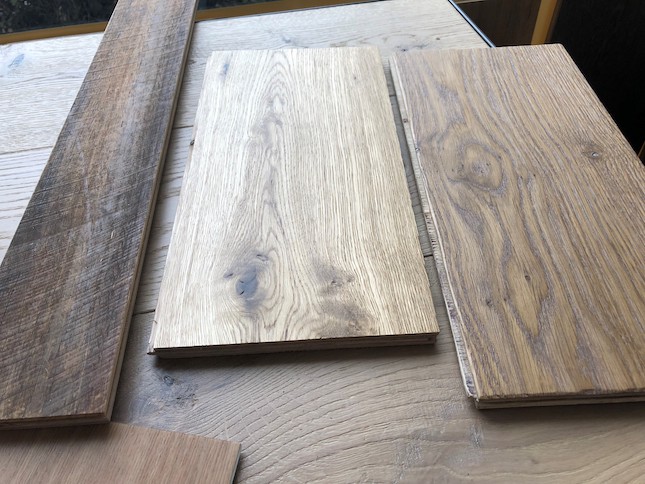
There’s a lot to be considered when it comes to choosing the right timber flooring for your next renovation or build. Over the years, timber flooring has witnessed a steady rise in its popularity. It’s not just about the timeless charm and elegance that wood brings, but also about the tactile warmth it introduces into a living space.
Both solid timber flooring and engineered timber flooring utilise the natural warmth and earthy feel of real timber and explore a diverse range of colours and finishes. But they both have their benefits and their drawbacks which is what we’re going to discuss with you below.
What is Engineered Timber Flooring?
Engineered timber flooring is designed with both form and function in mind. At its core, it’s composed of multiple layers: a timber veneer surface layer gracefully rests on a sturdy multi-ply base.
The top layer, about 3-4mm thick, is crafted to control the wood’s natural tendencies to expand or shrink. Yet, it retains the resilience of traditional timber, allowing for sanding and repairs if needed. Such meticulous design empowers manufacturers to produce pre-finished floorboards. The result? Once these floorboards are laid, there’s no wait time. They’re ready to be admired and walked upon, all in the span of a single day.
Benefits of Engineered Timber Flooring
Engineered timber flooring offers a modern and cost-effective alternative to traditional solid hardwood flooring. With its wide range of contemporary colors and finishes, it can revitalize any home. Notably, once installed, it’s hard to distinguish from solid wood flooring.
Key Benefits of Engineered Timber Flooring:
- Cost-Effective: More affordable than solid hardwood flooring
- Authentic Look: Nearly indistinguishable from solid wood once laid
- Durability: Offers better resistance to temperature and humidity fluctuations than solid wood
- Stability: It’s more stable and less prone to warping
- Finish: Comes pre-finished with a matt coat that reduces visible dust
- Versatility: Suitable for installation over heated subfloors
- Variety: Available in numerous wood species, styles, and finishes
- Maintainability: The top layer can be sanded and refinished if needed
- Installation: Faster and simpler to install
- Eco-friendly: A sustainable flooring choice
How Long Does Engineered Timber Flooring Last?
Engineered timber flooring can last for several decades with proper care. Its lifespan can be broken down based on a few key factors:
- Veneer Thickness: The top layer or veneer of engineered timber flooring can vary in thickness. A thicker veneer can be sanded and refinished more times than a thinner one.
- Thinner Veneer (0.6mm to 2mm): Lasts around 20-30 years
- Thicker Veneer (3mm to 6mm): Can last 40-80 years or more, depending on maintenance and refinishing
- Quality of Construction: Higher quality engineered floors with robust construction and finishes can withstand wear and tear better, prolonging their lifespan
- Maintenance: Regular cleaning, using protective pads under furniture, and avoiding excessive moisture can help in maintaining the floor’s integrity and appearance.
- Foot Traffic: Areas with heavy foot traffic will wear out faster. In residential settings with moderate traffic, engineered floors can last longer than in commercial spaces with heavy foot traffic.
- Refinishing: The ability to sand and refinish the top layer can restore the look of the floor and extend its life. Depending on the veneer’s thickness, you can refinish it multiple times.
- Environmental Factors: Engineered floors respond better to changes in humidity and temperature than solid wood, but extreme conditions can still affect their lifespan.
Disadvantages of Engineered Timber Flooring
No flooring is without its drawbacks, and even though we’re strong advocates for engineered timber flooring there are disadvantages to the timber that needs to be considered.Limited Refinishing:
Unlike solid hardwood, which can be sanded and refinished multiple times, engineered timber flooring has a limit. The number of times it can be refinished depends on the thickness of the top veneer. Thinner veneers might not allow for any refinishing, while thicker ones can be refinished a few times.Variability in Quality:
Not all engineered floors are created equal. There’s a wide range in quality, with some cheaper options not offering the durability and visual appeal of higher-end products. It’s crucial to choose a reputable manufacturer and understand the product’s specifications.Sensitivity to Harsh Cleaners:
Engineered floors can be sensitive to certain cleaning products. It’s essential to use recommended cleaning products to avoid potential damage. Check out our article, How to Properly Clean Oak Timber Floorboards for more tips on how to choose, and clean with the right flooring products.
Solid Timber Flooring vs Engineered Timber Flooring
Solid timber flooring and engineered timber flooring are both popular choices, but they have distinct characteristics. Solid timber flooring is made entirely from a single piece of hardwood, making it thick and durable. It can be sanded and refinished multiple times, giving it a long lifespan. However, it’s more susceptible to changes in humidity and temperature, which can cause warping or cupping.
On the other hand, engineered timber flooring consists of a top layer of hardwood veneer attached to multiple layers of plywood or other wood materials. This construction offers greater stability, reducing the risks of warping or shrinking. Engineered floors may not be as thick as solid floors, limiting the number of times they can be refinished. However, they often provide a more versatile installation, including over radiant heat systems, and can be more resistant to environmental fluctuations. In terms of aesthetics, both can deliver a beautiful and authentic wood appearance, but the choice between them often hinges on specific needs, budget, and installation considerations.
What is Solid Timber Flooring?
Solid timber flooring is a traditional style hardwood floor which is a solid piece of wood all the way through. Solid timber flooring is often installed in its raw form which means the timber will need to be sanded down and polished once installed.
Solid timber flooring doesn’t come with any warranty and has to be acclimatised in homes for weeks before installation. The had to be sanded and coated on site which adds more weeks before the flooring can be walked on.
Benefits of Solid Timber Flooring?
As mentioned previously, one of the biggest benefits of solid timber flooring is the ability to be able to sand the floorboards 3-4 times.
A few other benefits to solid timber flooring are as follows:
- Can be used as your subfloor when being installed over bearers and joints
- Sanded and coated after all trades are done
How Long Does Solid Timber Flooring Last?
The longevity of solid timber flooring is closely tied to the care and maintenance it receives. With diligent upkeep, it’s not uncommon for these floorboards to surpass a lifespan of 40 years. In fact, when properly cared for, solid timber can even serve multiple generations, with some historic homes boasting original hardwood floors that are over a century old.
This longevity is one of the many reasons homeowners invest in solid timber. Regular cleaning, periodic refinishing, and protection from excessive moisture and direct sunlight are key to ensuring its enduring beauty and function. While initial installation and maintenance might require more effort compared to other flooring types, the timeless appeal and long-term durability of solid timber flooring often make it a worthwhile investment for those seeking a blend of aesthetics and longevity.
What Are The Disadvantages of Solid Timber Flooring?
While solid timber flooring offers undeniable charm, it’s essential to consider its potential challenges:
- High Gloss: Can show dirt and dust, necessitating frequent cleaning
- Maintenance: High gloss finishes are more maintenance-intensive and challenging to repair than engineered floorboards
- Stability: Less stable compared to engineered timber flooring
- Board Size: Thinner boards may contribute to a cluttered appearance in homes
- Installation Duration: Typically takes 4-6 weeks
- Acclimatisation: Solid floorboards need around 6 weeks to acclimatise in the home. After installation, they must be coated and allowed to cure fully before occupancy.
- Colour Options: Offers a more limited colour palette.
Cost: Generally a pricier option compared to alternatives.
Selecting the right timber flooring is a blend of personal taste and practical needs. Explore our Engineered Timber Flooring collection, which captures elegance, top-tier quality, and durability in one. Whether you have a bustling household with energetic pets or lively parties, our flooring stands up to the challenge while exuding style. Highlights from our collection include the sought-after Beaumont Oak and Coastal Vienna. With a broad selection catering to various preferences, you’re sure to find your ideal fit. Trust in our 40+ years of expertise in the flooring industry to guide you to the perfect choice.
Contact Us
We’re the experts in traditional, recycled, and engineered oak timber flooring and have been for the last 40 years. We have a deep knowledge of oak timber flooring and a commitment to providing the best possible customer service. If you’d like to learn more about our timber flooring products or have questions you need answered then get in touch with one of our timber flooring specialists today.







